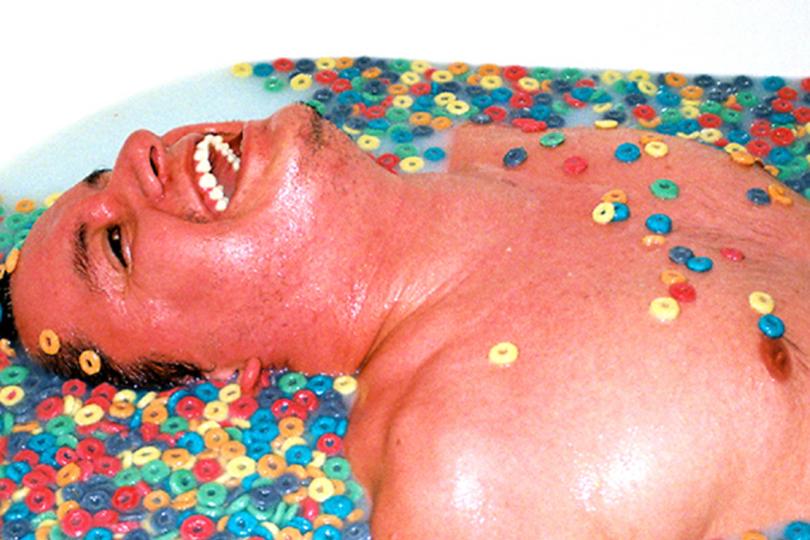Appreciating Jaime Carrera

The Twin Cities performance scene won’t be the same without Jaime Carrera. That’s largely because the scene was never the same with Jaime Carrera. There’s a kind of sweet irony in knowing that a career dedicated to the unexpected and undefinable played such a big part in defining a genre. Experimental dance is no easy path to fame or acclaim, and certainly not fortune, but Jaime Carrera doggedly established an identity that made him one of the best-known and most respected players in a very specific but hugely influential niche.
I only got to see Jaime perform a few times and only ever met him via professional correspondence, but I knew the first time I read a review of one of his shows that this was a performer I needed to seek out. When I finally got the chance, the experience more than lived up to my expectations. Here was an artist with a genuine disregard for convention, performing behind glass in a downtown Minneapolis storefront, engulfed in a noise-rock soundscape while projected images flickered all around him. He didn’t look like any stereotyped image of a dancer, nor did he look like he gave a good goddamn about anybody’s stereotypes. His movements were free but not erratic, purposeful but not mannerly, passionate but not pretentious. I was transfixed. There simply wasn’t much to which I could compare it.
That seems to be the theme running through most of the Jaime Carrera profiles I’ve read over the past few years: the things he did on stage (and heck, often his stages themselves) were fairly unprecedented. While his work could be profane, provocative, political, profound and perverse, often all at the same time, his unmistakable joy of creation was always evident just beneath the surface.
Laura Holway nailed the appeal of a Jaime Carrera production when she reviewed part of his groundbreaking Outlet festival for Playlist in 2013: “When I go to the Jungle, I have a good idea of what to expect: I sit in a chair and applaud at the end. But I was piqued by not knowing what Outlet would hold. I guessed that it would feel like more of an event than a traditional performance. And it certainly did… I’m a big fan of Carrera’s aesthetic – that’s what drew me to Outlet in the first place. He’s profane, stubborn, and a great people watcher. ‘What would happen if we tried this? What would this person - often not a trained performer - look like on stage?’”
The passing of a local artist is a very specific kind of hurt. Even more so than with the death of a world-renowned artist, there’s a feeling of betrayal, that someone or something has robbed our tight-knit community of one of its inimitable voices. When news of Jaime’s passing began spreading through my social feeds last week, that sentiment came through more intensely than ever. There was a sense that the Minnesota arts landscape had been instantly and irrevocably altered. Everyone who knew the man’s work knew just how massive a hole his departure left in the local dance scene, and how impossible that hole would be to fill.
But that’s the beautiful thing about an artist as singular as Jaime Carrera. He wouldn’t want the next generation of dancers to waste their time trying to fill a Jaime-shaped hole when instead they could be using the tools he left them to carve out dozens of new holes in their own shapes, and striving to leave just as big a void when they themselves move on. I can’t tell you a truer measure of an artistic icon than that.




